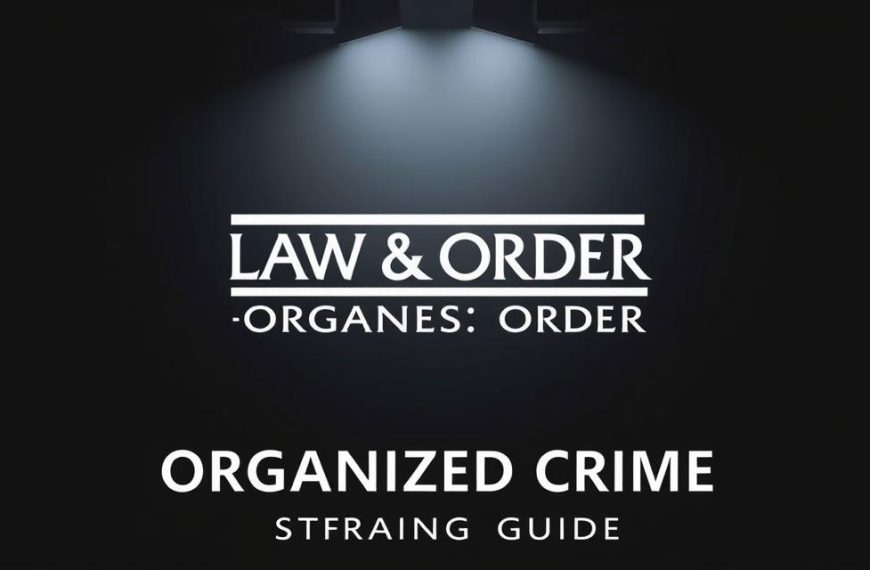Embarking on a legal career requires careful planning, particularly when considering the time commitment involved. In the UK, qualifying as a solicitor typically spans five to six years. This includes a three-year undergraduate degree, followed by SQE assessments and two years of practical training. For aspiring barristers, the process involves a similar academic foundation but concludes with a specialised Bar course and a year-long pupillage.
Full-time programmes remain the most common route, though part-time study options allow greater flexibility. These extended pathways often stretch over four years, accommodating professionals balancing work with studies. Dual degree combinations, such as a JD paired with a master’s qualification, can further lengthen the educational journey while broadening career prospects.
Modern legal training has evolved to offer varied entry points. Universities now provide accelerated courses for some students, while others incorporate qualifying work experience into their programmes. This adaptability helps candidates tailor their path to personal circumstances without compromising on essential skills development.
It’s crucial to recognise that academic study forms just one phase of becoming a practising lawyer. The journey from classroom to courtroom involves rigorous assessments and hands-on training. This guide will explore each stage in detail, helping prospective students map out their professional futures effectively.
Understanding the Law School Journey
Navigating legal qualifications in the UK follows a structured pathway blending academic rigour with practical expertise. This systematic approach ensures candidates develop both theoretical understanding and workplace-ready abilities.
Overview of UK Law Education
The journey begins with foundational qualifications. Most aspiring solicitors or barristers start by achieving:
- A-levels in relevant subjects like History or English
- Alternative entry routes through Law Foundation courses
Undergraduate studies then form the cornerstone. A three-year law degree provides essential legal principles and critical analysis skills. Non-law graduates can still enter the profession through conversion courses.
Key Stages in Legal Training
Postgraduate requirements have evolved significantly. Since 2021, the Solicitors Qualifying Examination (SQE) replaces older systems, streamlining the process into two parts:
- SQE1 tests functioning legal knowledge
- SQE2 assesses practical legal skills
Final stages involve completing two years of training with a legal employer. This hands-on experience helps bridge academic learning with real-world practice. Specialised pathways exist for barristers, requiring additional advocacy training and pupillage placements.
Prospective students should regularly check updates from the Solicitors Regulation Authority. Recent reforms aim to make legal careers more accessible while maintaining rigorous professional standards.
Exploring Full-Time and Part-Time Study Options
Choosing the right study format shapes both academic experience and career readiness in legal education. Institutions offer structured pathways catering to diverse needs, from immersive programmes to flexible learning models.
Full-Time Law School Structure
The standard route involves a three-year course with intensive legal training. Students engage with core modules like contract law and civil litigation, progressing to specialised electives. This format suits those prioritising rapid qualification and full academic immersion.
Part-Time and Dual Degree Considerations
Extended programmes spread over four years accommodate professionals managing work or family commitments. Evening classes and weekend seminars maintain academic rigour while offering scheduling freedom. Some courses integrate practical placements, blending theory with real-world application.
Combined degrees add interdisciplinary depth but require extra time. A common example pairs legal studies with business management, extending the timeline by 12-18 months. These options appeal to students targeting niche sectors or leadership roles.
Financial planning remains crucial across all formats. Full-time students often complete qualifications faster, while part-time learners gain earn-while-you-learn opportunities. Institutions increasingly support both models, recognising varied paths to legal excellence.
how long does law school take
The timeline for qualifying in legal professions isn’t one-size-fits-all, with multiple elements shaping individual journeys. While academic study forms the foundation, practical requirements and personal choices create significant variations in overall timescales.
Core Components and Extensions
Solicitors face a five to six-year pathway after completing a three-year law degree. This includes passing SQE assessments and accumulating two years of qualifying work experience. Those without prior legal education must complete conversion courses, adding 6-12 months to their timeline.
Barristers follow a distinct route requiring pupillage after academic studies. Their five-year process combines classroom learning with hands-on training in courtroom procedures. Delays often occur when securing chambers placements, particularly in competitive regions.
Individual circumstances heavily influence progress. Students balancing employment with studies may extend their degree programmes. Regulatory changes, like recent SQE introductions, also affect preparation time for professional exams.
Key variables include:
- Undergraduate subject background
- Exam attempt success rates
- Availability of practical placements
Proactive planning helps mitigate delays. Many institutions now offer integrated courses combining study with qualifying experience, streamlining the journey to legal practice.
Academic Preparation and Entrance Requirements
Building a strong academic foundation begins long before university applications. While no specific A-level subjects are compulsory for legal studies, strategic choices demonstrate key competencies. Subjects like history, English literature, and economics develop analytical thinking and persuasive communication – skills central to legal practice.
Essential A-levels, GCSEs and LNAT
Top institutions typically require A*AA to AAB grades for undergraduate law programmes. Competitive applicants often combine essay-based subjects with quantitative disciplines:
| Subject | Skills Developed | University Preference |
|---|---|---|
| History | Evidence evaluation | High |
| English Literature | Critical analysis | Very High |
| Economics | Logical reasoning | Moderate-High |
GCSE requirements often include grade 6/B or higher in English and maths. Some schools prioritise foreign language qualifications for international law pathways.
The LNAT remains crucial for undergraduate applications. This 2-hour 15-minute test assesses:
- Verbal reasoning abilities
- Argument construction skills
- Data interpretation
| Test Centre Location | Fee |
|---|---|
| UK/EU | £75 |
| International | £120 |
Successful candidates balance academic excellence with practical skills development. For detailed guidance on application processes, visit our comprehensive resource here.
In-Depth Look at the Law School Years
Legal studies unfold in structured stages, each year introducing new academic challenges and professional development opportunities. This phased approach equips learners with both theoretical knowledge and practical expertise essential for courtroom success.
The 1L Year: Core Subjects and Adjustments
First-year pupils encounter a fixed curriculum designed to build foundational legal competence. Mandatory modules typically include:
- Civil Procedure
- Constitutional Law
- Contracts and Torts
These subjects align with bar examination requirements, ensuring comprehensive preparation. Cohort-based learning groups foster teamwork while eliminating timetable conflicts. Practical training begins through Legal Research & Writing workshops and simulated court proceedings known as Moot Court exercises.
The 2L and 3L Years: Customisation and Career Focus
Advanced students gain scheduling autonomy to shape their specialisation. Popular electives often feature:
| Year | Focus Area | Common Choices |
|---|---|---|
| 2L | Foundational Expansion | Criminal Procedure, Trusts Law |
| 3L | Career Specialisation | Tax Law, Corporate Governance |
Final-year participants receive priority enrolment for niche courses and clinical placements. Many engage in complex case analysis through legal aid programmes or commercial law simulations. This progression from structured learning to self-directed study mirrors professional practice demands.
For detailed insights into first-year curriculum structures, consult our comprehensive subject breakdown. The gradual shift from compulsory modules to tailored study paths allows learners to develop both broad competencies and sector-specific skills.
Transitioning from Law School to Legal Practice
Building professional competence extends beyond lecture halls into real-world legal environments. Strategic career planning during academic studies often determines success in securing permanent roles after graduation.
Securing Qualifications and Work Experience
Early practical exposure shapes career trajectories. Many students begin gaining work experience during summer breaks, with first-year opportunities including:
- Judicial internships analysing court procedures
- Policy research roles in government departments
- Pro bono casework with legal charities
Second-year recruitment cycles prove critical. Over 75% of law firms use on-campus interviews to select summer associates. Successful candidates typically secure training contracts 18 months before graduating.
| Experience Type | Skill Development | Career Pathway Relevance |
|---|---|---|
| Law Firm Summer Schemes | Commercial awareness | Corporate practice |
| Non-Profit Placements | Client advocacy | Social justice roles |
| Academic Research | Legal analysis | Postgraduate study |
Graduate recruiters prioritise candidates with diverse experience. Combining firm-based training with public sector placements demonstrates adaptability. Networking during placements often leads to mentorship opportunities and job referrals.
Proactive students balance academic demands with professional development. Regular skills audits help identify gaps in commercial awareness or technical knowledge. This approach ensures smooth transitions from student to practitioner roles.
Pathways to Becoming a Solicitor, Barrister and CILEx Lawyer
The legal profession offers multiple entry routes tailored to diverse career ambitions and learning preferences. Each pathway combines academic rigour with practical training, ensuring candidates meet strict professional standards.
University Routes and the SQE Process
Aspiring solicitors typically complete a law degree followed by the Solicitors Qualifying Examination (SQE). This two-part assessment replaces older systems like the Graduate Diploma in Law, streamlining qualification processes. Non-law graduates must finish a conversion course before attempting SQE stages.
Future barristers follow a similar academic foundation but pursue specialised Bar courses. Mandatory pupillage placements provide courtroom experience under seasoned practitioners. The Solicitors Regulation Authority oversees these changes, ensuring consistency across training models.
Alternative Qualification Routes and Apprenticeships
For those prioritising hands-on learning, diploma law programmes like CILEx CPQ merge work with study. This three-stage approach develops practical skills while earning qualifications. Solicitor apprenticeships offer six-year, Level 7 alternatives for A-level graduates, combining paid roles with part-time study.
These flexible routes demonstrate the legal sector’s commitment to accessibility. Whether through traditional degrees or workplace training, becoming a solicitor or barrister demands strategic planning aligned with personal strengths and career goals.


















